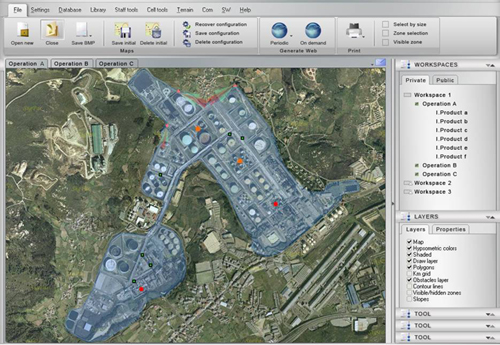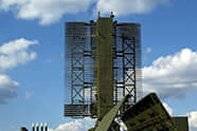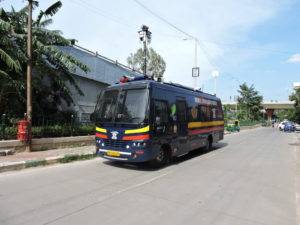Critical Infrastructure Protection (CIP) is the term used to refer to the systems and processes implemented to ensure that designated critical assets are protected from actions intended to curtail, seriously disrupt, or altogether prevent their functioning. A critical infrastructure need not refer only to physical assets of national importance (ports/airports, nuclear facilities, Parliament, etc.); it may refer to any asset (physical, virtual) considered by an organization (government, parastatal, or private), as vital to its functioning. These systems and processes either serve a monitoring function or a command and control function. This brief details the components of a Critical Infrastructure Protection solution and the desired features of a CIP solution, with reference to Homeland Security requirements.
Components of a Critical Infrastructure Protection solution
There are two major components to a Critical Infrastructure Protection Solution in a Homeland Security setting – the sensor network and the command and control network. The sensor network consists of devices that aim to control the entry and movement of individuals and entities within the premises of the critical infrastructure, and to monitor the activities of those individuals and entities that do gain access to the premises.
| Sensor Group | Function | Sensor |
| Access Control | Accreditation | Iris recognition Fingerprint Access Cards Number-plate recognition |
| Authorization | Access doors RFID/Wi-fi Indoor location Presence authorization | |
| Inspection | Vehicle scanner Person scanner Baggage scanner | |
| CCTV | Monitoring | PTZ camera Fixed camera IR camera Thermal camera |
| Intelligent monitoring | Video analytics | |
| Centralized monitoring | Video-wall | |
| Perimeter Surveillance | Perimeter Surveillance | Fire detector IR barrier RF barrier Movement detectors Vibration detectors Buried cable Sensors of presence |
Components of a Critical Infrastructure Protection solution
The command and control network picks up the inputs from the sensor network, places them in a cartographic representation of the facility/premises, allows communication between emergency response units, and outlines emergency response protocols for these units to follow.

The Critical Infrastructure Protection Solution allows a user to:
- Transparently and seamlessly facilitate communication amongst the various emergency response units and the control centre
- Provide a Common Operational Picture (COP) of the surveillance and emergency response infrastructure at the premises
- Automate emergency response tasks and guide participants in the implementation of emergency response protocols
- Represent response units and sensors on a map, and interact with them for further information
- Generate reports and statistical data
Desiderata for a Critical Infrastructure Protection Solution
Critical Infrastructure Protection solutions are characterized by a variety of architectures and feature-sets. However, there are a few features which are a must-have:
Easy integration of sensors
The solution should allow the easy integration of new sensors, thus ensuring that the application does not have to be changed when a new sensor or sensor-group is introduced.
Support for sensors outside the traditional security portfolio
In case of critical infrastructures such as power, petrochemical, and manufacturing plants, it is important that the Critical Infrastructure Protection Solution allows the integration of non-security sensors; in this case SCADA sensors
Publish/Subscribe mechanism
The sensor data should be managed by a Publish/Subscribe mechanism that allows sensors to publish data and authorized users to subscribe to it. This architecture ensures that there is low overhead in the system when handling 1000s of sensors and 100s of authorized users.
Modular architecture
A modular architecture will allow users to implement a Critical Infrastructure Protection Solution in a phase-wise manner. Typically, CIP projects are complex and large in scale, and a modular architecture allows users to take a simple-to-sophisticated approach in the implementation of the Critical Infrastructure Protection Solution.
Conclusion
Organizations looking into ensuring the safety and non-interrupted functioning of their critical infrastructure will benefit enormously from implementing a Critical Infrastructure Protection Solution (CIP). Mistral offers the C4ISR solutions for Homeland Security needs in India. Mistral’s CIP solutions are targeted at organizations requiring real-time monitoring and control of their critical infrastructure.
Mistral is a Homeland Security company that offers a wide range of Critical Infrastructure Protection Solutions. To know more, visit homeland security page.



